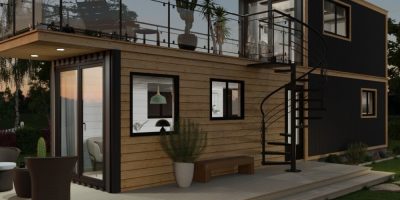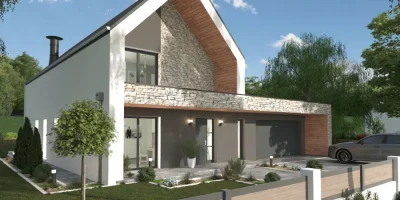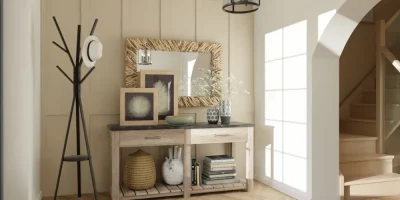Marble, granite, hardwood, tile — these interior design materials usually get most of the attention. But what if the secret to creating truly exceptional spaces was hiding in lesser-known or even underutilized materials?
In this 7-minute read, we’ll dive into some game changing materials that deserve a space in your interior design projects.
There are more and more interior designers using these different materials to…
- Create more sustainable designs
- Reduce costs
- Stand out in the interior design space
Which will you use in your next project?
The Best Underused Design Materials
At Cedreo, we know how challenging it can be to choose the right combination of materials for your interior design project. We know that it’s not just about the aesthetics, it’s also about functionality, sustainability and even indoor air quality.
That’s why we’ve made it easy for you. With each of these interior design materials, we’ll give you a few reasons why you should consider using it as well as some expert ideas for incorporating it into your interior design project.
Let’s start with…
1. Bamboo
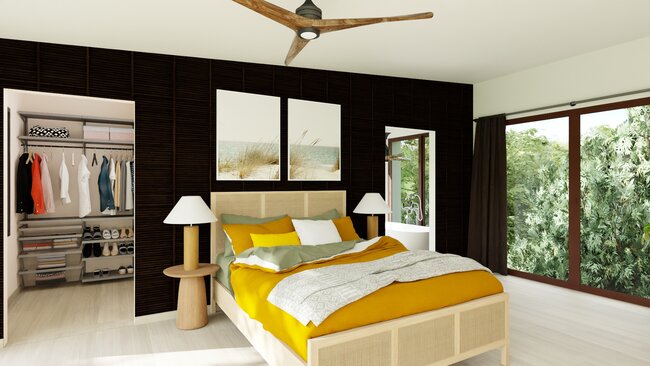
Why You Should Consider This Material:
Bamboo has been used for a long time in construction, but it seems to be experiencing a resurgence, especially for those looking for more sustainable materials. Bamboo is a fast growing plan that doesn’t need much in the way of pesticides or fertilizers, which makes it a great eco-friendly option.
Bamboo flooring can be as strong as traditional hardwood floors but with improved flexibility and lighter weight. It’s natural textures also work well with a variety of interior design style from modern and sleek to earthy and rustic. Just keep in mind that bamboo doesn’t naturally handle moisture well, so if you’re thinking of using it in high-humidity areas, it needs to be properly treated to avoid warping.
How to Incorporate This Material Into Your Designs:
- Flooring: If you’re considering bamboo flooring, go with strand-woven bamboo. It’s much denser than traditional bamboo and has better water resistance. That makes it a smart choice for high-traffic areas like kitchens and hallways where durability is important.
- Walls and ceilings: Want to add warmth and improve sound control? Bamboo panels can be a great solution since they provide acoustic and thermal insulation.
- Outdoor Furniture: When treated properly, bamboo is extremely durable and can withstand the elements. Consider using it for pergolas or outdoor furniture. Just be sure to look for pressure-treated bamboo or bamboo that has been treated in another way so as to prevent cracking or warping due to weather exposure.
2. Cork

Why You Should Consider This Interior Design Material:
Cork a natural material harvested sustainably from the bark of cork oak trees. This process doesn’t harm the trees and it regenerates, so it’s easy to see why it’s a top pick for eco-conscious interior design. Cork is lightweight, flexible and durable which makes it great for keeping spaces quiet and comfortable. Plus, it’s mold, mildew, and fire-resistant. Just be aware that cork isn’t as hard as other natural wood products and can dent, so it’s not the best option as flooring for high-traffic areas like entryways.
How to Incorporate This Material Into Your Designs:
- Flooring: Cork flooring is perfect for rooms where you want a little extra comfort and soundproofing, like bedrooms or playrooms. Its natural elasticity feels great underfoot while also helping reduce noise.
- Wall Coverings: Cork wall panels aren’t just functional — they can add unique visual interest as well. They work wonders in rooms where sound control is important, such as home offices or media rooms. Plus, cork’s warm texture adds a cozy touch to otherwise plain walls.
3. Used Bricks
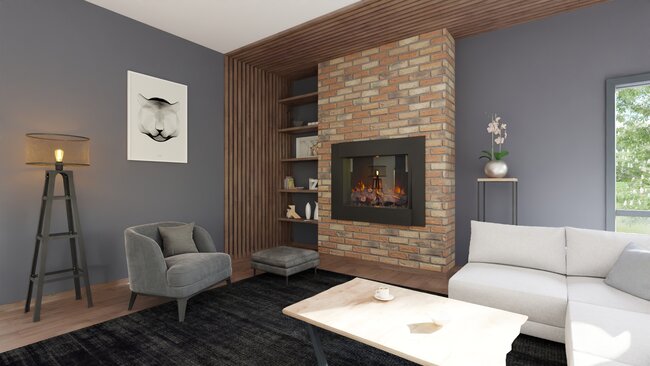
Why You Should Consider This Material:
Reclaimed materials are also gaining popularity in the interior design world. From reclaimed wood to other recycled materials, they add character and a sense of history to your designs. Reclaimed bricks are no different.
These bricks are often salvaged from older buildings and bring an authentic, worn texture that just can’t be mimicked by new materials. They’re perfect for projects aiming for a rustic or industrial vibe.
Plus, reusing bricks is a sustainable choice since it reduces the demand for new production and lowers the overall environmental impact of your interior design projects. Just keep in mind, that older bricks can be less uniform in shape or structure, so while they’re great for decorative accents like feature walls or fireplace surrounds, they’re probably not the best fit for load-bearing walls.
How to Incorporate This Material Into Your Designs:
- Feature Walls: Create a striking accent wall with reclaimed bricks. These add a rustic, somewhat industrial touch to living rooms, dining rooms, or even bedrooms. The natural, weathered look adds visual interest and texture that gives the space a raw, authentic feel. Pair this with sleek lighting or minimalist furniture for an attractive contrast. Or cover the bricks with a German smear finish for an old-world look.
- Fireplace Surrounds: Naturally distressed bricks are perfect for creating a warm and cozy fireplace surround.
Outdoor Patios: Don’t overlook used bricks for outdoor areas. Their weathered appearance blends better into natural surroundings. That makes them a great option for garden paths, patios, or small retaining walls.
4. Jute
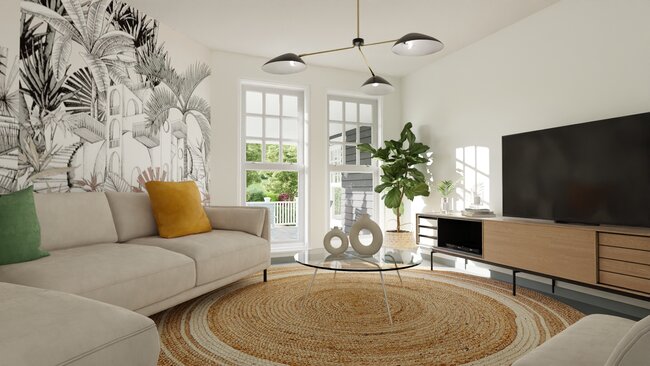
Why You Should Consider This Interior Design Material:
Jute is one of the most affordable and eco-friendly options in interior design materials. Jute is made from plant fibers, is biodegradable, and has a warm, organic texture that pairs well with a range of styles, from bohemian to coastal designs.
Although you’ll usually find it in rugs, jute is a versatile material that you can also use in decorative pieces like wall hangings or furniture accents. Just don’t plan on using it in wet areas. It’s better suited for dry spaces like living rooms or bedrooms.
How Interior Designers Can Incorporate This Material Into Their Designs:
- Jute Rugs: Add jute rugs to living rooms or bedrooms for a textured, natural look. They work particularly well in spaces that need some extra acoustic insulation. And their neutral tones also complement a variety of decorative styles.
- Wall Coverings: Consider using jute panels or jute wallpaper for accent walls. Its organic, textured surface adds warmth and visual identity to neutral spaces. Plus it’s a perfect sustainable alternative if you want to look of natural materials without using heavier wall materials like wood or natural stone.
- Furniture Accents: Jute’s durable texture works great in smaller applications like woven chair seats or wrapping table legs. Use jute accents like these to bring an earthy, handcrafted feel to any room.
5. Recycled Glass
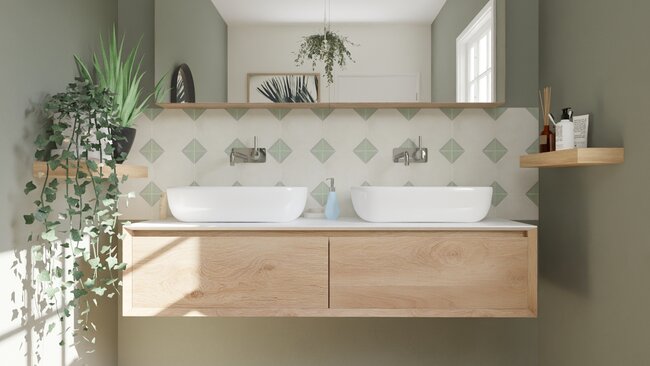
Why You Should Consider This Material:
Recycled glass isn’t just environmentally friendly, it’s also a visually interesting material for designers who want to merge sustainability with beauty. Repurposed glass can be transformed into unique countertops, backsplashes, or tiles.
How Interior Designers Can Incorporate This Material Into Their Designs:
- Countertops: Recycled glass countertops are highly durable and heat-resistant. Their shimmering, reflective surfaces add depth and elegance, especially when you pair them with natural wood cabinets or polished hardware.
- Backsplashes and bathrooms: Consider using recycled glass tiles for kitchen backsplashes or bathroom floors and shower surrounds.
6. Reclaimed Wood

Why You Should Consider This Material:
Reclaimed wood brings a sense of history and warmth that new materials simply can’t replicate. It’s usually sourced from old barns, factories, and other decommissioned buildings. That means each piece is unique and brings its own patina and story.
This material is a great fit for interior design projects where you want to infuse rustic character or vintage charm. The benefits don’t end there. Not only does reclaimed wood offer a rich aesthetic, but it’s also an environmentally responsible choice since it helps reduce deforestation and waste.
How to Incorporate This Material Into Your Designs:
- Feature Walls: A reclaimed wood feature wall can instantly transform any room with extra depth and texture. The weathered look creates a focal point.
- Custom Furniture: Reclaimed wood works beautifully in bespoke furniture pieces and decorative accessories. Use it to craft dining tables, headboards, or coffee tables with a story. The aged wood’s imperfections and varied tones help add a one-of-a-kind touch to each piece.
- Flooring: If you’re looking for a floor that tells a story, reclaimed hardwood floors are the way to go. It offers a distinctive, lived-in look that you just can’t get with new wood. Just be sure it’s been properly treated and sealed to handle the wear and tear of daily use.
7. Hemp
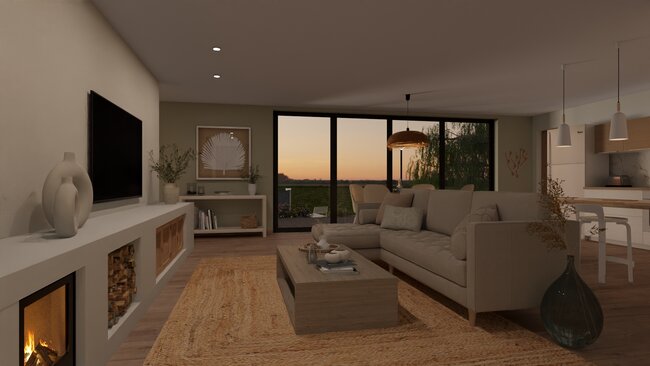
Why You Should Consider This Material:
Hemp is a sustainable, fast-growing plant that requires very little water or pesticides, making it an eco-friendly choice for a variety of interior design spaces. Use it for natural fabrics, insulation, or wall coverings to get a winning combination of functionality and a natural, earthy texture.
It’s durable, naturally resistant to pests, and has excellent insulating properties. That said, it’s not as readily available as other materials, so sourcing can sometimes be a challenge depending on where you are located
How to Incorporate This Material Into Your Interior Design Projects:
- Upholstery: Hemp fabrics are a fantastic choice for upholstery. It’s a natural alternative to synthetic fabrics and works well for high-traffic furniture like sofas or chairs, especially in homes where sustainability is a priority.
- Wall Insulation: Hemp wool insulation provides great thermal and acoustic insulation and is an ideal material for energy-efficient and sustainable building.
- Area Rugs: Hemp fibers are incredibly strong so they’re perfect for woven rugs. They bring an organic, textured look to a room and hold up well in areas that see a lot of foot traffic. Plus, they’re biodegradable, so they’re a win for both style and the planet.
8. Terrazzo

Why You Should Consider This Material:
Terrazzo is made from a mix of recycled materials like glass, marble, and granite embedded in a cement or resin base. It provides a unique, speckled look that seems to never go out of style.
It’s incredibly durable, low-maintenance, and available in a wide range of colors and finishes. Because of its strength, it’s perfect for high-traffic areas like kitchens, bathrooms, entryways, or commercial applications.
How to Incorporate This Material Into Your Designs:
- Flooring: Its non-porous surface resists staining and the custom mix of colors allows you to create a one-of-a-kind look. Go with a matte finish in wet areas to reduce the risk of slipping.
- Countertops: Terrazzo countertops are heat-resistant and easy to clean. Their speckled appearance adds a fun yet elegant visual element, that makes it an excellent material selection for eclectic spaces.
- Accent Furniture: Terrazzo isn’t just for floors and countertops — use it in smaller doses by incorporating it into tabletops or furniture surfaces. The material’s distinctive pattern and toughness make it a great option for coffee tables or side tables that need to handle regular wear and tear.
9. Wicker
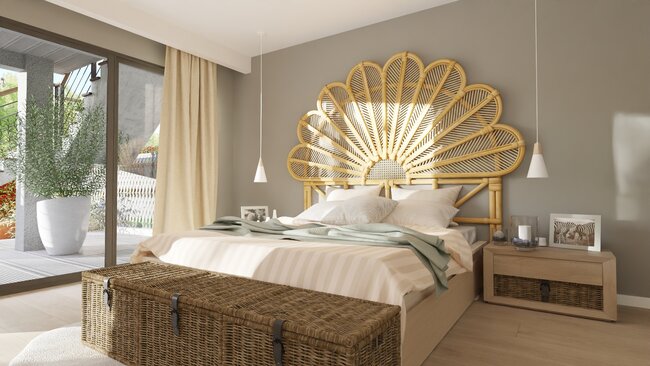
Why You Should Consider This Material:
Wicker has been one of the go-to materials in interior design for decades. It’s lightweight and durable and brings a breezy, natural feel to any space. Wicker is typically made from natural fibers like rattan, bamboo or willow. For a more sustainable material, go with natural wicker. However, synthetic versions offer better weather resistance for outdoor use
How to Incorporate This Material Into Your Designs:
- Accent Pieces: Wicker accent chairs or ottomans bring texture and warmth to rooms. The natural, woven pattern adds dimension, especially in sunrooms or living spaces. For added comfort, pair wicker chairs with soft, cushiony fabrics in neutral or earthy tones.
- Lighting Fixtures: Wicker pendant lights or chandeliers add an organic touch. Plus, the intricate weaving creates beautiful light patterns when illuminated.
10. Mycelium
Why You Should Consider This Material:
Mycelium is one of the most innovative materials an interior designer can use in their current projects. It comes from the root system of fungi and is an exciting newcomer in sustainable materials. It’s completely biodegradable and can be grown or combined with other sustainable materials to create custom shapes and design elements. Plus, its unique, earthy aesthetic adds a touch of nature to any space.
Mycelium is still gaining traction, so while it’s not widely available just yet, it’s a great forward-thinking option if you want to push the boundaries of sustainable design.
How to Incorporate This Material Into Your Designs:
- Sculptural Furniture: Mycelium is an alternative to plastic and can be made into a variety of shapes. That makes it an interesting choice for furniture like side tables or stools.
- Acoustic Wall Panels: Mycelium panels are a great choice for acoustic insulation, so consider using them in wall panels for home offices, theaters, or any space where adequate sound insulation is needed.
Start Using an Interior Design Software to Elevate Your Designs
Ready to start creating genuinely exceptional spaces with unique interior design materials? Which are you going to use for your next project? Whether you’ll use reclaimed materials like used brick or eco-friendly materials like jute and hemp, Cedreo is ready to help make your dream projects a reality.
See why more interior design professionals are switching to Cedreo:
- Intelligent toolset lets you create professional 3D designs faster than ever.
- Extensive design library helps you adapt to your clients’ needs.
- Cloud-based software doesn’t bog down your computer and streamlines team collaboration.
- Photorealistic 3D renderings wow clients and help you land more jobs.
With a FREE version, you’ve got nothing to lose. Try Cedreo today!

